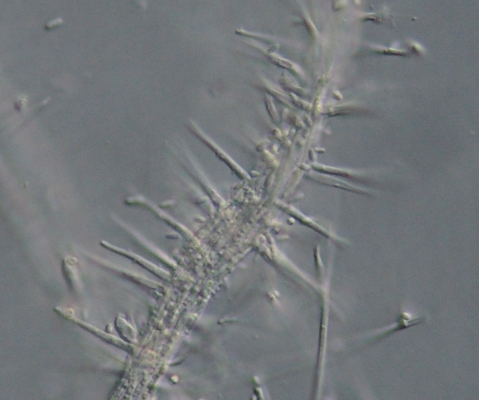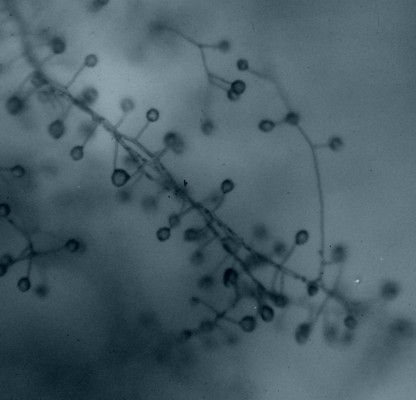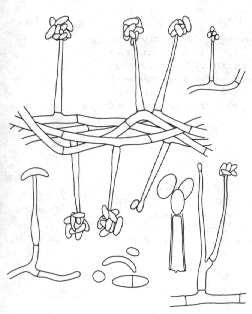Main page <> Index of descriptions <> Acremonium <> Next description
Acremonium



Species of Acremonium are recognized by solitary to weakly branched, tapering phialides arising from vegetative filaments and bearing a wet cluster of mostly 1-celled spores (conidia). The filaments are sometimes bound together into "ropes" several cells in diameter. The illustrations here present Acremonium in its narrower sense, but a great variety of species have been included in the genus at one time or another. Almost any species bearing colourless or brightly-coloured conidia on rather simple unpigmented phialides might be referred to Acremonium. Seifert et al. (2011) present a key, written by Walter Gams, to no fewer than 50 genera that might be confused with Acremonium. Even when taken in their narrowest sense, species of Acremonium can be extremely difficult to identify without the use of molecular methods.
Common in soil, plant debris, rotting mushrooms, etc. Some appear to be parasitic on living fungi.
Classification: in a narrow sense of Acremonium the species are mostly members of the Hypocreomycetidae. Holomorphs: Emericellopsis, Hapsidospora, Leucosphaerina, Nectria, and many others.
Ref: Gams (1971) has been the standard reference since its publication. It contains keys, descriptions and illustrations based on cultures kept at the Centraalbureau voor Schimmelcultures in Utrecht, The Netherlands and on other material as well. The species are difficult to separate on morphology alone, so the advent of genetic methods were a great help in resolving taxonomic problems. The paper of Summerbell, et al. (2011) employs these new techniques to many of the same cultures used by Gams, resulting in a pair of highly useful interrelated monographs. Domsch et al, 1980 provides an excellent review (probably mostly by Walter Gams) of the species known from soil.